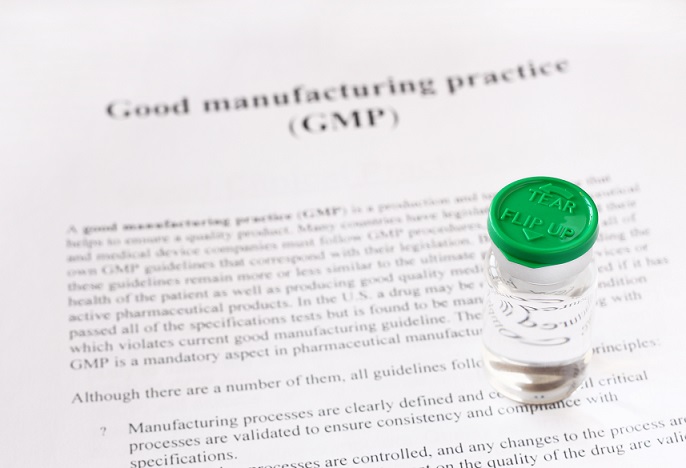
The life sciences manufacturing industry is full of Good Practice standards. Every step and process is covered under some GxP; from design and testing to the manufacturing and distribution of pharmaceutical products and medical devices.

When it comes to laboratory processes and validation studies, there is often confusion between Good Manufacturing Practices (GMP) and Good Laboratory Practices (GLP). Both are necessary for compliant development and manufacturing of pharmaceuticals, but involve different actions at different stages of production.
Along with the procedures, the people executing them play a crucial role in any lab study. Lab quality assurance (or quality control) personnel also have different roles to play when it comes to GMP and GLP.
Understanding the differences between GMP and GLP is the first step. Knowing when each is applicable and necessary, and how to practice each–these are the key to compliant pharmaceutical production.
Comparing GMP and GLP
GMP and GLP are industry-specific guidelines for compliance in the stages of design, testing, manufacturing and distributing healthcare products. Proper protocols and the validation of processes is critical in producing replicable results that adhere to industry standards.
Generally speaking, GLPs are research and study-focused, while GMPs are production and process-focused. However, they have a few other significant differences better understood by defining each.
What is GLP?
GLP compliance monitors conditions, processes, documentation, and archiving of studies performed in laboratory settings. Such endeavors require highly accurate and trackable data as well as high-quality results in order to validate and market the final product. The integrity of the data is critical for developing replicable results, as well as the product’s progress to market.
GLPs were first established in the 1970s by the FDA, to assess nonclinical pharmaceutical lab study safety, including in vitro and ex vivio test systems. GLP is designed to protect the integrity of the study’s scientific data, providing the verifiable record of open-ended research studies necessary for advancement of the product.
GLP regulates nonclinical laboratory studies researching or marketing drugs for humans and animals, human cells/tissues, food color additives, perfumes, medical devices, biologics, and pesticides.
What is GMP?
GMP compliance refers to quality assurance in the manufacturing processes, as defined by the local regulatory body to ensure the safety of healthcare products sold in their jurisdiction. “cGMP,” which is essentially just “current” GMP, outlines the specific conditions under which manufacturing can and should occur. Such guidelines cover, among others, the conditions of lighting, plumbing, hygiene, storage, equipment maintenance, and separation of substances to avoid contamination.
GMP was first established in 1938 by the FDA to monitor manufacturing quality of food, drugs, medical devices, and cosmetics. GMP is designed to ensure that each product batch is manufactured properly in accordance with pre-approved quality requirements.

GMP vs GLP in the lab
GLP & GMP – When & Where?
Knowing the differences between GMP and GLP can help differentiate which protocol is called for at which phase of production. The same general principles and requirements apply to the development of drugs, biologics, and medical devices. However, GMP and GLP affect different stages in the processes.
When is GLP applied?
GLP is required during nonclinical laboratory safety studies supporting research and marketing of biocompatibility, toxicology, pharmacology, and other medical products. During “test systems” studies, GLP is also necessary in regards to handling live organisms or microorganisms, as well as plants. In addition, safety and efficacy testing should be performed under GLP.
GLP compliance is not required for discovery, basic research, screening, and in vitro studies in which safety assessment is not a concern. GLP it also does not apply to testing of chemistry or microbiological quality.
When is GMP applied?
GMP standards are applied during the batch / lot release (or lot conformance), manufacturing & testing, and medical product marketing phases. Per the facility, the testing phase of components used in clinical trials (active pharmaceutical products, critical excipients) may require GMP compliance. As may testing of stability, process validation, and other supporting activities.
Some exceptions include the manufacturing and testing of medical devices in clinical trials, excluding design controls. Some investigational drug products and biologics in clinical trials may not require full GMP compliance. They may instead specify a number of “relevant” regulations to which to adhere.
Best Practices in The Lab of The Future

Validation studies may vary regarding whether GMP or GLP is appropriate, or whether both may be called for. Typically this will be determined by the nature of the product in question. To ensure compliance in industry standards, the final product is expected to be manufactured and tested under full GMP conditions before public release. This makes data integrity extremely critical throughout the entire process, and vital to the project outcome.
Although these procedures are not always required for every lab study, they provide an outline for efficient processes that are easy to audit and review. A firm grasp on your business objectives, standards, and policies is critical as such knowledge may hold the key to understanding when to apply either and how.
Science and technology are advancing. The steps to take to market a medical product to the public are subject to change, as are the regulations that protect the end users of these products. The impact of automation, AI and augmented reality technologies on GMP and GLP implementation in the lab is likely to grow. So it’s no wonder that forward-thinking manufacturers in the life sciences industry are looking to adopt innovative technologies to streamline processes and minimize the chances for human error.



